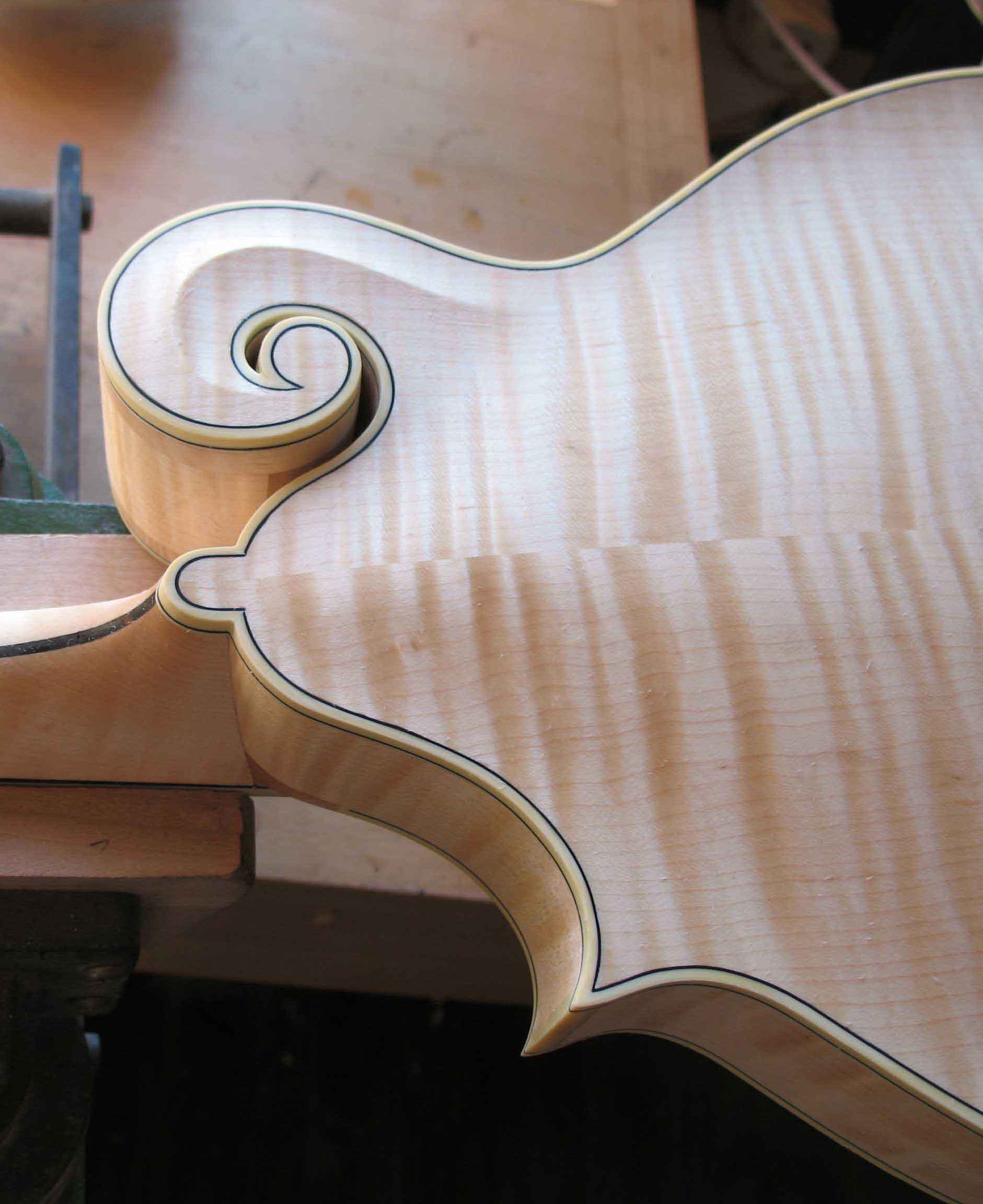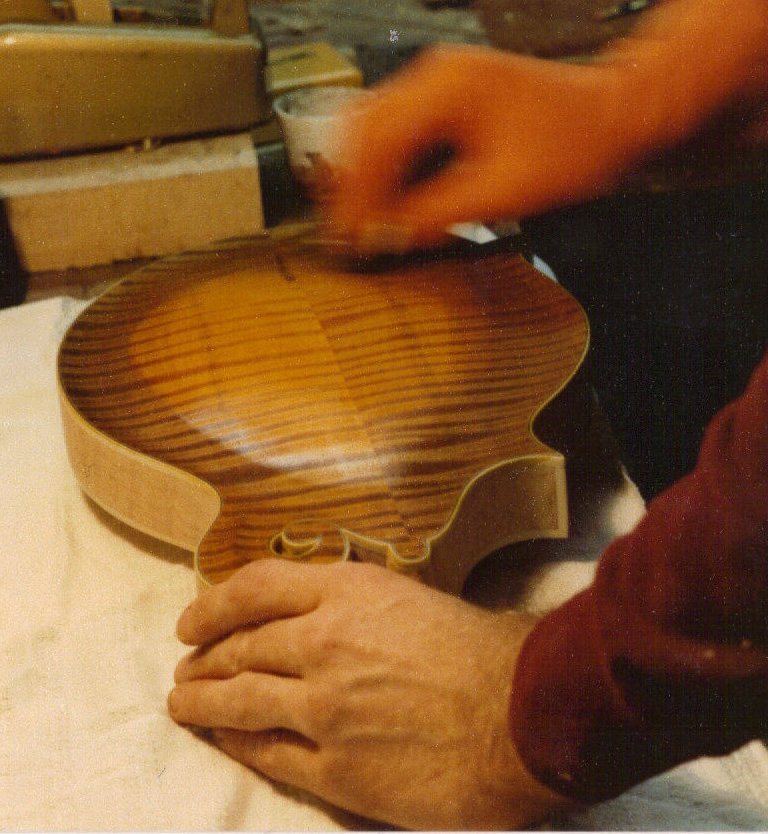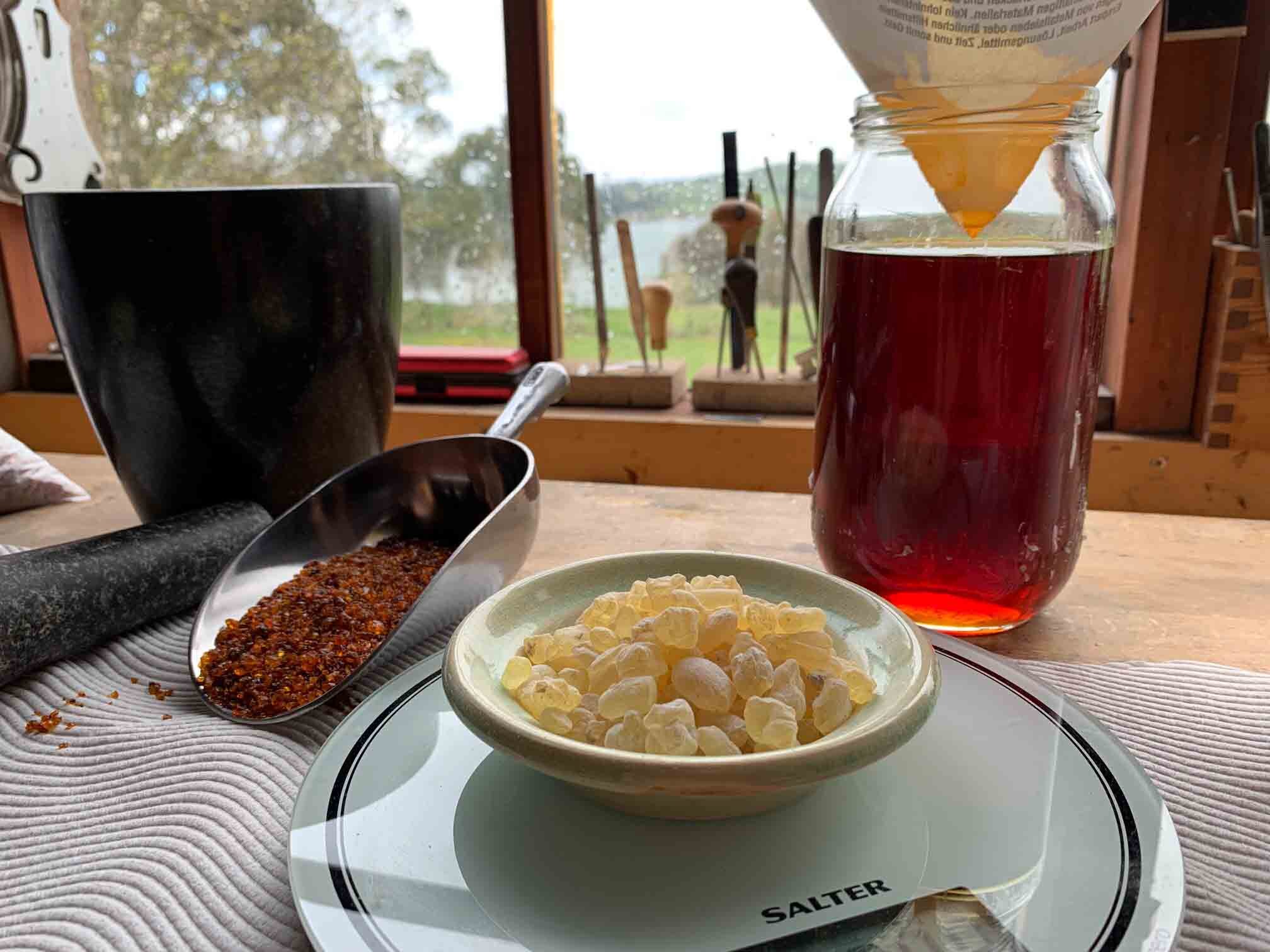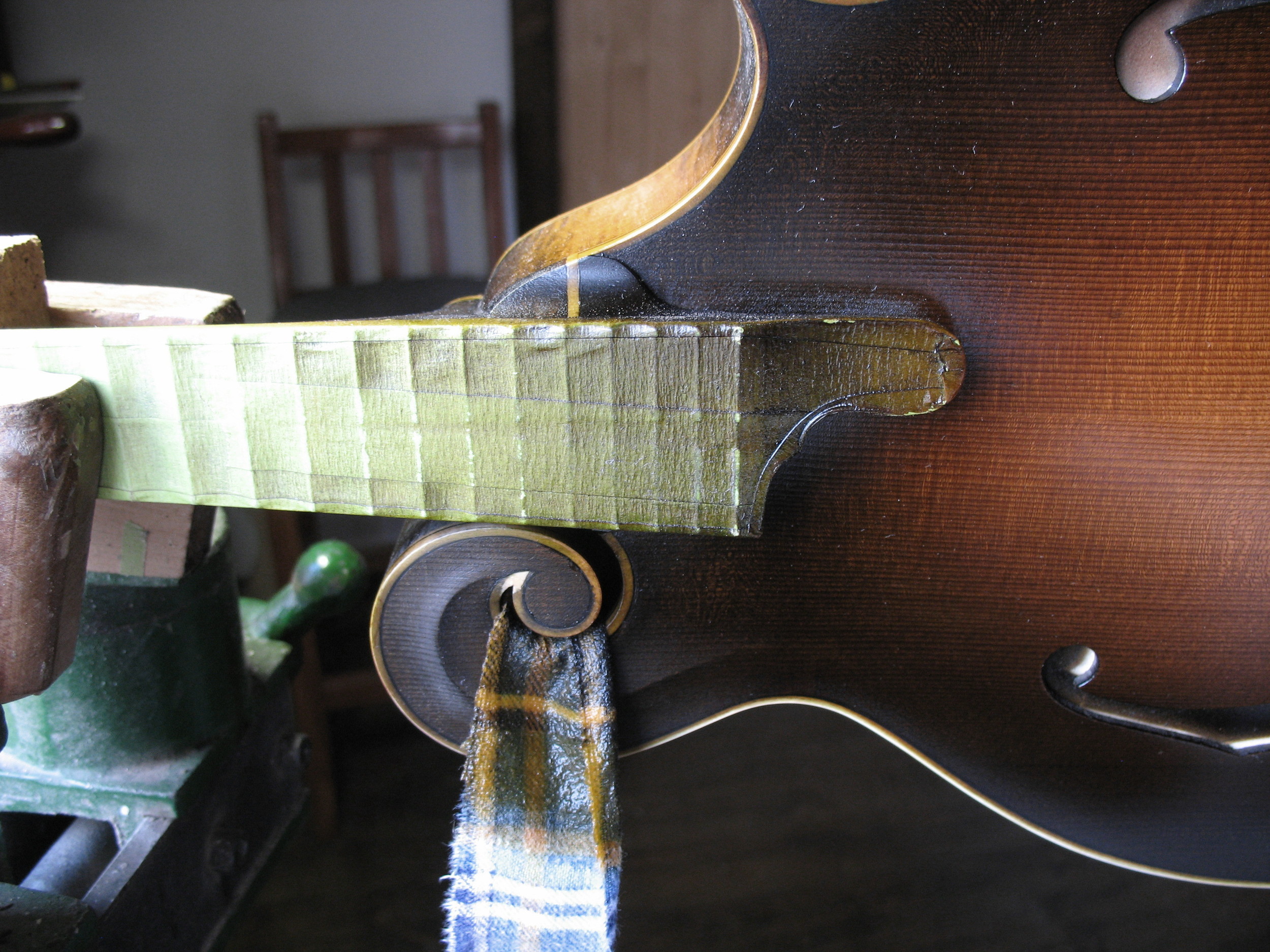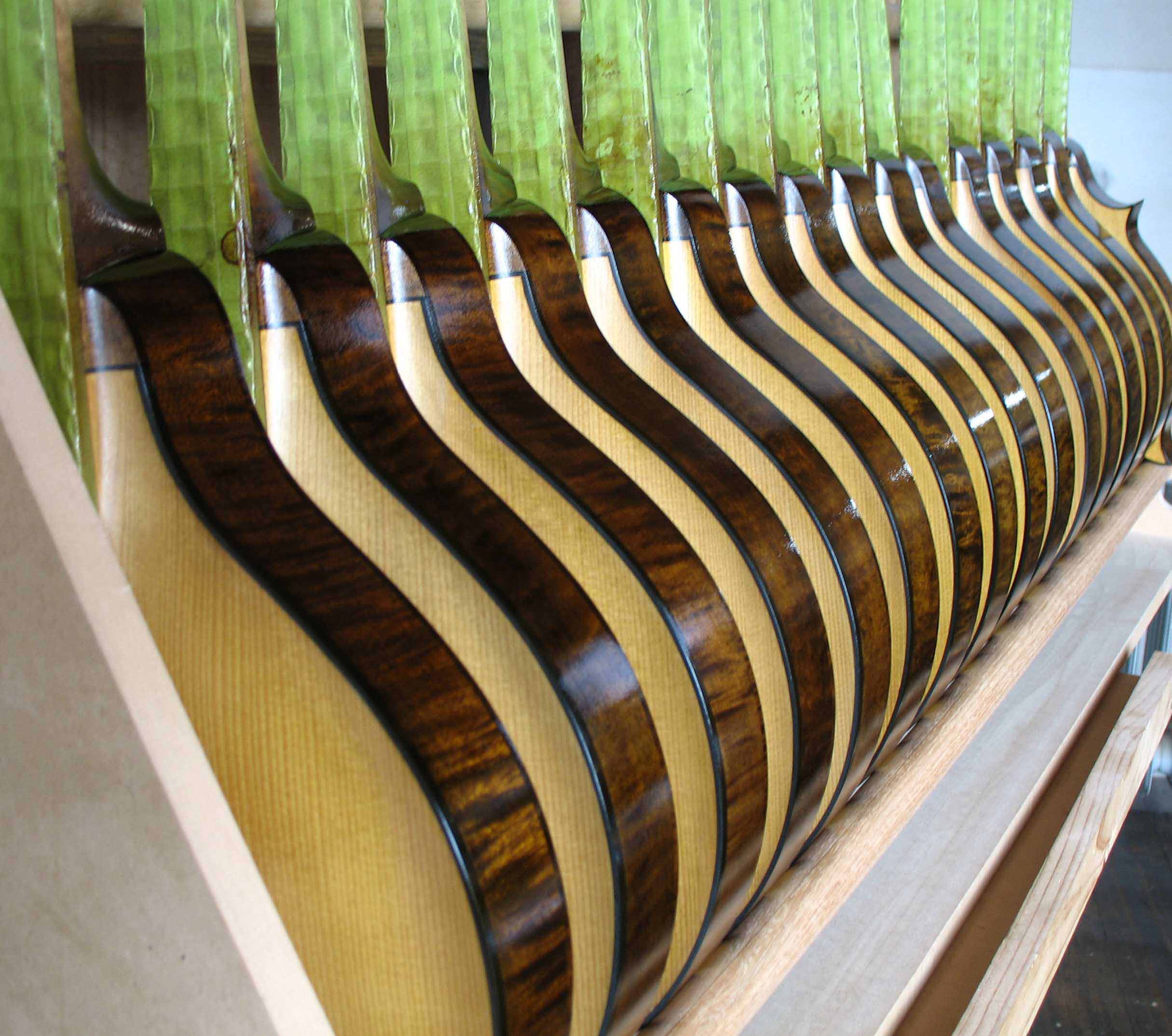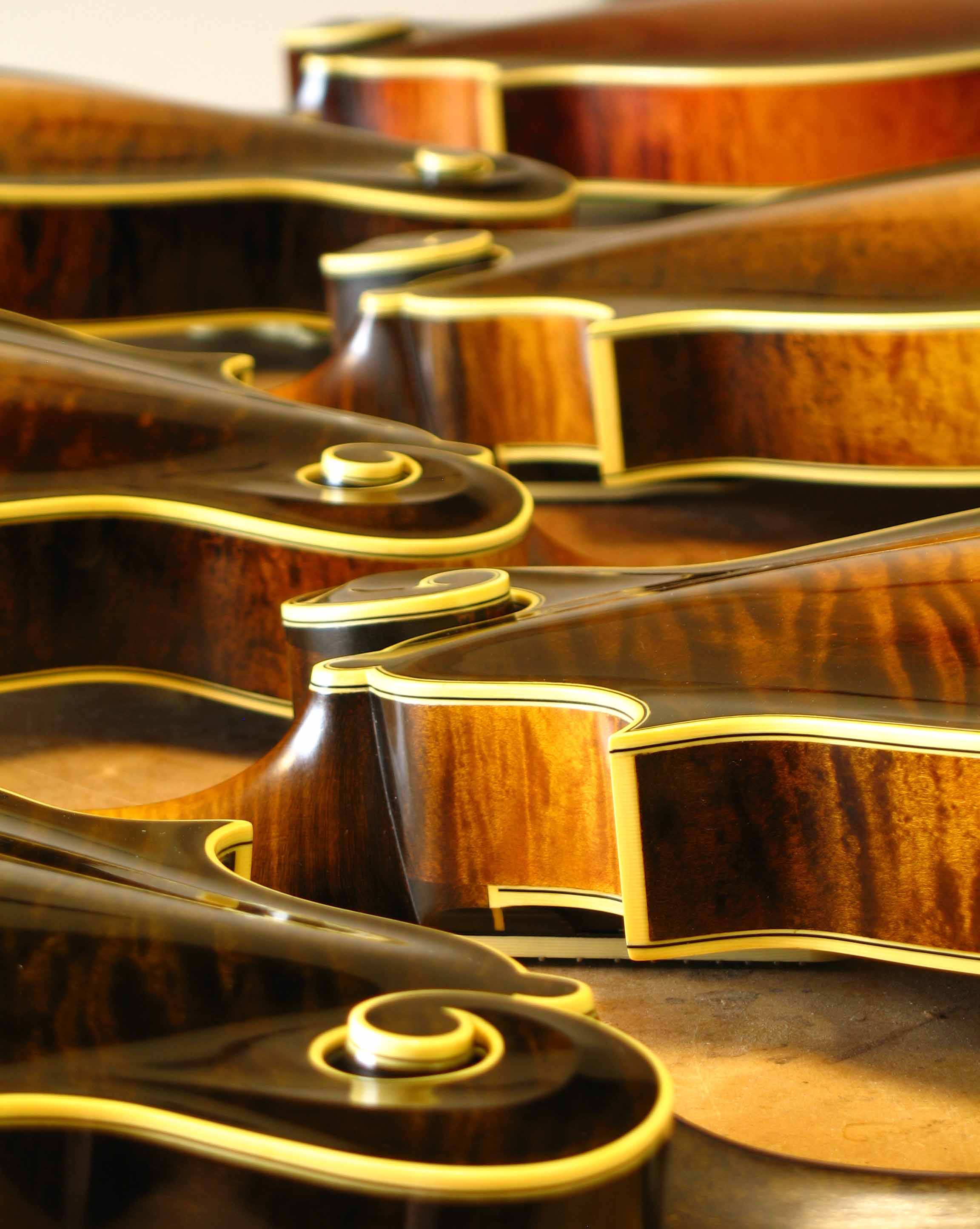STAIN
All instruments are stained using water based aniline dyes directly on to the surface of the wood before the varnish is applied. Because water stain raises the grain, it is first raised with clear water and the whole instrument fine sanded a second time which then prepares a flatter surface for varnishing after the actual staining process is completed. Like watercolour painting, the wood is first lightly dampened and then the stain is applied with a rag, wiping and blending the colours into a graduated sunburst. Whether it is the straight grain lines of the spruce or the curly flame of the maple, the effect is to magnify the full depth and beauty of the wood. Like pictures in a frame, each area within its binding is worked quickly while the instrument as a whole is still damp.
VARNISH
(right, clockwise) sandarac, copal, blonde shellac, seedlac, TN shellac
When I first started using spirit varnish in 1980 (mandolin #81), I noticed an immediate change in the appearance and the quality of the sound of the mandolin compared to the instruments that were previously finished in thicker nitro-cellulose lacquer. I have experimented with a number of different recipes since then, but the main ingredient is always the same, shellac in its varying grades and hues. Seedlac is shellac in it's purest form and has good durability, particularly when mixed with small amounts of natural oils and tree resins such as sandarac and copal.
After the staining is completed, the instrument is sealed with dark shellac (Truely Native) to lock in the stain colours and add a warm amber glow to the final finish. Bindings and inlays are scraped clean and the lighter top coats of varnish are applied. Shellac and resins are dissolved in alcohol and strained for impurities before spraying the first few coats and finishing to a silky gloss by french polishing technique.
The Story of Shellac by William Zinsser Inc
